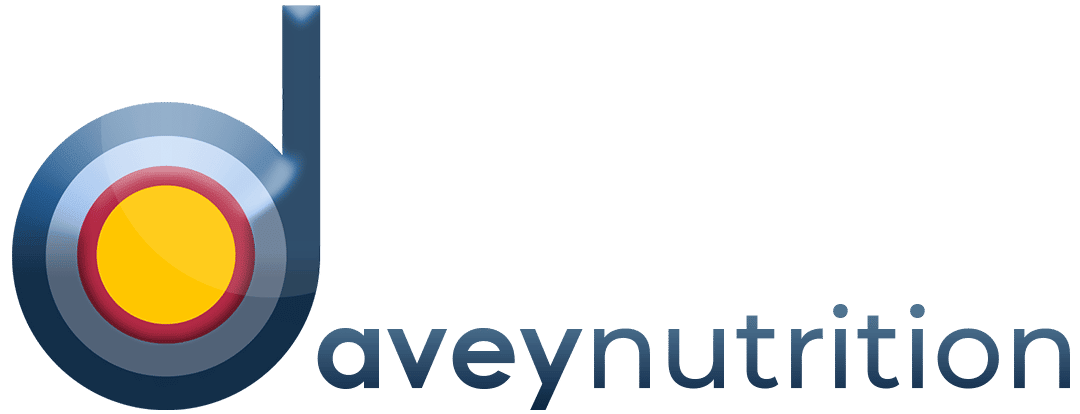
Knowledge Base & FAQs
Your Questions Answered
Type a subject in the box, and any relevant FAQs should appear below. You can also browse the topics below to find what you are looking for.
Video Resources
Here are videos that cover a range of topics on the daveynutrition website.
Nutrition - related questions
The International Society of Sports Nutrition (ISSN) recommends that protein intakes for people who regularly engage in physical activity should be between 1.4g-2g per kg of bodyweight per day (g/kg/day). For people who are involved in regular physical training or resistance training it is recommended that a figure closer to 2g/kg/day is used.
The Performance Nutrition Calculator available here will calculate your macros for you based on your personal details and your goals.
The meal plans are fully customisable so you can choose a plan and edit to suit your needs and goals. To begin with you can choose a plan that best suits your preferences. Make sure to check out the How To section to fully understand how to change meal plans to suit your needs.
An exercise day refers to any day where you partake in low to moderate levels of physical activity. An example of this would be an activity where you are able to chat and talk with relative ease without running out of breath. For some athletes low to moderate levels of exercise would refer to any activity which is roughly 50% – 70% of maximum heart rate (HR). Maximum HR can be calculated by subtracting your age from 220. This blog may also be helpful to understand different exercise intensities.
Intensive exercise refers to any physical activity where you cannot say more than a few words without running out of breath. Any example of this would be high-intensity interval training or circuits. For some athletes intensive exercise would refer to anything that is at 70% or above of your maximum heart rate (HR). Maximum HR can be calculated by subtracting your age from 220. This blog may also be helpful to understand different exercise intensities.
A rest day can be described as a day that people still do the recommended amount of physical activity but there is no structured exercise workout or training session.This is a day which allows your body and mind to recover in order to prepare you for exercise days. On a rest day you may include active recovery like yoga / mobility or a walk or similar.
A recovery meal is a meal which is eaten after exercise in order to help our body replenish energy stores and repair muscle. A recovery meal will usually contain a source of carbohydrate and some protein. Within the recipe page you can select ‘Recovery’ from the ‘Nutrition Goal’ drop-down options in order to view appropriate Recovery recipes.
Within the recipe page you can select ‘Low Calorie’ from the ‘Nutrition Goal’ drop-down options. This will enable you to see recipes which contain lower calories. Remember that ‘fat loss’ will occur where your energy intake is lower than your overall energy output. You can calculate calorie requirements for fat loss using the Performance Nutrition Calculator. This blog will help you understand calorie requirements and what your post-workout food should look like based on your activity levels and goal.
Within the recipe page you can select ‘Muscle Gain’ from the ‘Nutrition Goal’ drop-down options. You can calculate calorie requirements for building muscle mass using the Performance Nutrition Calculator.
Within the recipe page there are a number of options such as ‘Pre-Performance’, ‘Carb Loading’, ‘High Carbohydrate’ and ‘Recovery’ from the ‘Nutrition Goal’ drop-down options.
This blog will help you to determine what calorie target will be most suited to your individual goal and also outlines the pros and cons associated with each option.
Often people can underestimate the amount of energy they need on a daily basis, particularly athletes and people who are regularly physically active. This blog will help you to understand energy balance and calorie needs and this will provide you with more detail in relation to understanding the importance of adequate calories in the context of Performance Nutrition.
Yes.Within your Meal Plan and below each meal (breakfast, lunch, dinner and snacks) there is an option to ‘Add Item’. Within this you have a drop-down box which allows you to select ‘Add Custom Recipe’.
In most cases you can leave ingredients out or swap them for other ingredients. However, in some recipes, swapping or leaving the ingredient out may impact how the recipe binds or comes together. For example, whey protein is needed to bind protein bars or balls. Simple swaps like seeds for needs are straightforward or if you do not like the taste of an ingredient it usually can just be excluded. Please note that large changes in ingredients will impact the nutrition values of the meal.
All meal plans should be used as a guide and if there is no specific meal plan for the calories allocated to you then you should choose the nearest meal plan to those calories. For example, if you are allocated 1700 calories then the nearest plan to that would be the 1800 calorie meal plan.
Yes. Your overall calorie intake throughout the week is the main thing to be mindful of. The meal plans should be used as a guide only and within the context of exercise.
It can be more difficult to lose body fat and maintain lean muscle mass at the same time. However, keeping protein intake high (~2g per kg of body weight) and choosing the ‘body recomposition 10%’ option in the ‘Your Goal’ drop-down box on the calculator is a what we recommend. This will allow you to lose body fat and maintain as much lean body mass as possible in a sustainable and realistic time frame.
Once you have calculated your needs on the calculator we would recommend browsing the Meal Plan section of the website and selecting a plan which fits your calorie needs and which looks appealing to you. You can save the meal plans by clicking ‘Save to My Plans’ and access these through ‘My Account’ whenever you wish. We have a wide range of meal plan options for different calorie requirements. If you do not find a meal plan which exactly fits your needs we recommend choosing the closest meal plan option and adding or removing some items (such as a snack).
Website function questions
Within a particular recipe, under the recipe image there is an option to ‘Add to Favourite Recipes’. These recipes will then be saved in the ‘My Plan’ section under ‘My Favourite Recipes’.
Yes.Under the ‘My Plan’ section there is an option to edit or meal plans or to add your own meal plan.
On the recipe page under the ‘Nutrition Goal’ drop-down options there are numerous recipe options for different allergies. It is extremely important that you carefully check all recipes for any ingredients that you may be allergic to and avoid these ingredients. You can also add and remove different recipes from your meal plan by clicking on ‘edit or delete meal plans’ under the ‘My Plans’ section.
Yes. To change the servings within a recipe you can hover the number of servings and use the slider to choose the servings amount. It will then change the ingredients required.
Yes. Your calories for rest and exercise days will remain the same for the most part and your carbohydrate intake will be lower on rest days. This is in order to ensure you have a good amount of stored carbohydrate (known as ‘glycogen’) to adequately fuel your exercise days.
‘MFM’ refers to ‘maximum fat metabolism’ and this represents the calories needed to maintain lean body mass and reduce body fat while in a calorie deficit. This can be helpful for people who are aiming to lose weight.
‘MRDC’ refers to ‘minimum recommended daily calories’ which is the amount of calories you would need per day if you are aiming to decrease or increase body weight.
‘BMR’ refers to ‘basal metabolic rate’ which is the amount of energy you need to keep the body functioning while at rest. It does not take any activity into account.
‘TDEE’ refers to ‘total daily energy expenditure’ which is the amount of energy you need to keep the body functioning, perform day-to-day activities and participate in physical activity. It is calculated by multiplying your BMR by an activity multiplier. The activity multiplier takes into account the intensity of your physical activity.
‘LBM’ refers to ‘lean body mass’ which is the difference between total body weight and total weight of body fat. It takes into account the weight of the body and deducts the weight of body fat.
‘FBM’ refers to ‘fat body mass’ which calculates the weight of body fat when it is deducted from total body weight. Body fat is important as it helps to protect organs & joints and to keep us at a steady internal body temperature. Whilst too much body fat can lead to health conditions, too little body fat can also cause issues with fertility and bone health, particularly in females.
‘BMI’ refers to ‘body mass index’ which determines your body size based on weight and height. BMI should only be used as a guide as it does not distinguish between weight of muscle and weight of fat. Therefore, some people with higher levels of muscle may be ‘overweight’ or ‘obese’ when their BMI is calculated.
Waist to height ratio is a measure of a person’s body fat and divides waist circumference by height when both are measured using the same units (eg: cm).
Website support questions
Your username will be the email address that you used to sign up to daveynutrition.
When logging on there is an option to select ‘Forgot Password’. When you click on this you will be prompted to enter your username/email address which was used to sign up to daveynutrition. A password reset link will then be sent to this email address.
Please email info@daveynutrition.com or fill out the form on this page and a member of the team will be in touch as soon as possible.
Your membership fee will be debited from your account on the same every month beginning from the day you signed up. For example, if you signed up on the 28th April 2020 your next bill will be on the 28th May 2020 and so on. Details of your account can be found under ‘My Account’ and under the ‘Account’ tab or via this link where you can also see all your past invoices.
The membership is a rolling membership with no expiration date however you are free to cancel your membership at any time.
Details of your account can be found under ‘My Account’ and under the ‘Account’ tab or via this link where there are options to ‘Update Billing Info’ / ‘Change’ or ‘Cancel’ your membership.
To book an online consultation please email info@daveynutrition.com or fill out the form on this page and a member of the team will be in touch as soon as possible.
There is currently no discount available for students. The membership price of €12.99 is based on the value we believe it offers to people as a learning and nutrition planning tool.
There is a great deal of flexibility in that a person can access all the recipes for free and also use the PRO account without any contract, meaning you can cancel at any time.
We welcome and value your feedback. To contact us please email info@daveynutrition.com or fill out the form on this page and a member of the team will be in touch as soon as possible.
If your question isn’t answered above, please contact us.











